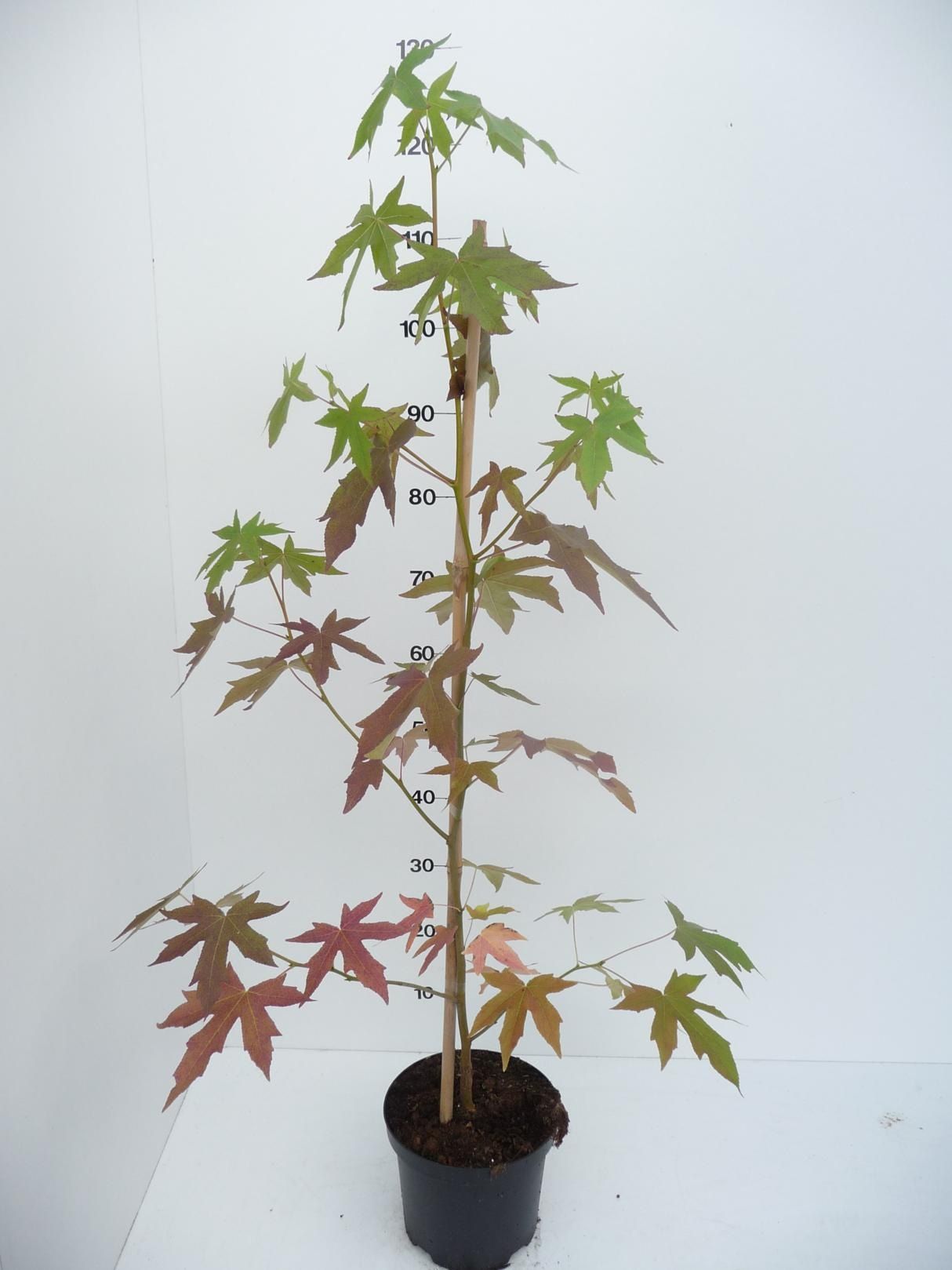Folk name: Amber tree
Plant height: approx. 10 m - 20 m
Deciduous: Yes
Hardy: Reasonably
Description: The amber tree is known for its beautifully shaped leaves, which are very similar to those of a maple (Acer). The leaf is deeper incised than that of a maple and stands on a very long stem. The edges of the leaf are serrated. Most beautiful is its autumn colour: bright golden yellow or deep red to purplish red. The fruits (on a mature tree) are particularly beautiful. They hang in long strings and then dangle in the wind.
Pruning: Prune the tree at dormancy: late autumn to early spring. Prune only those branches that are in the way for whatever reason.
Flowering time: The plant flowers in April and May
Pitch:
You can place Liquidambar in both sun and semi-shade. The amber tree grows on almost all soil types. Best results are obtained in pH-neutral soil (pH 5), but it also grows well in strongly alkaline (calcareous) soil. Transplanting is poorly tolerated by the tree. Root pruning is poorly tolerated at all.
Care:
It is by no means a tree you can wait to see mature; it is an extremely slow grower. After ten years, you'll be lucky if the tree is six metres tall, and you'll have to wait another ten years before it reaches ten metres.
History:
In Central and East America and Mexico, the amber tree (Liquidambar styraciflua) is native.
Significance:
From Liquido = liquid and ambar = amber. In America, the amber tree is considered the primordial father of chewing gum. Hence the nickname of amber tree is 'sweetgummi'. The leaf in particular is strongly aromatic. When rubbed, it smells more like beeswax than evokes associations with a deliciously fresh gum. However, the leaves do secrete a gum resin - called styrax or storax - in hot weather. In the past, this gum resin was an ingredient in the better shoe cream. Take the test: rub the leaf on the leather of your shoes. Let it soak in for a while and dry. Rub the shoes with a cloth, they will shine like a feast. Moreover, they will be water-repellent for now. Since ancient times, Liquidambar orientalis has been known as 'liquid amber'.









